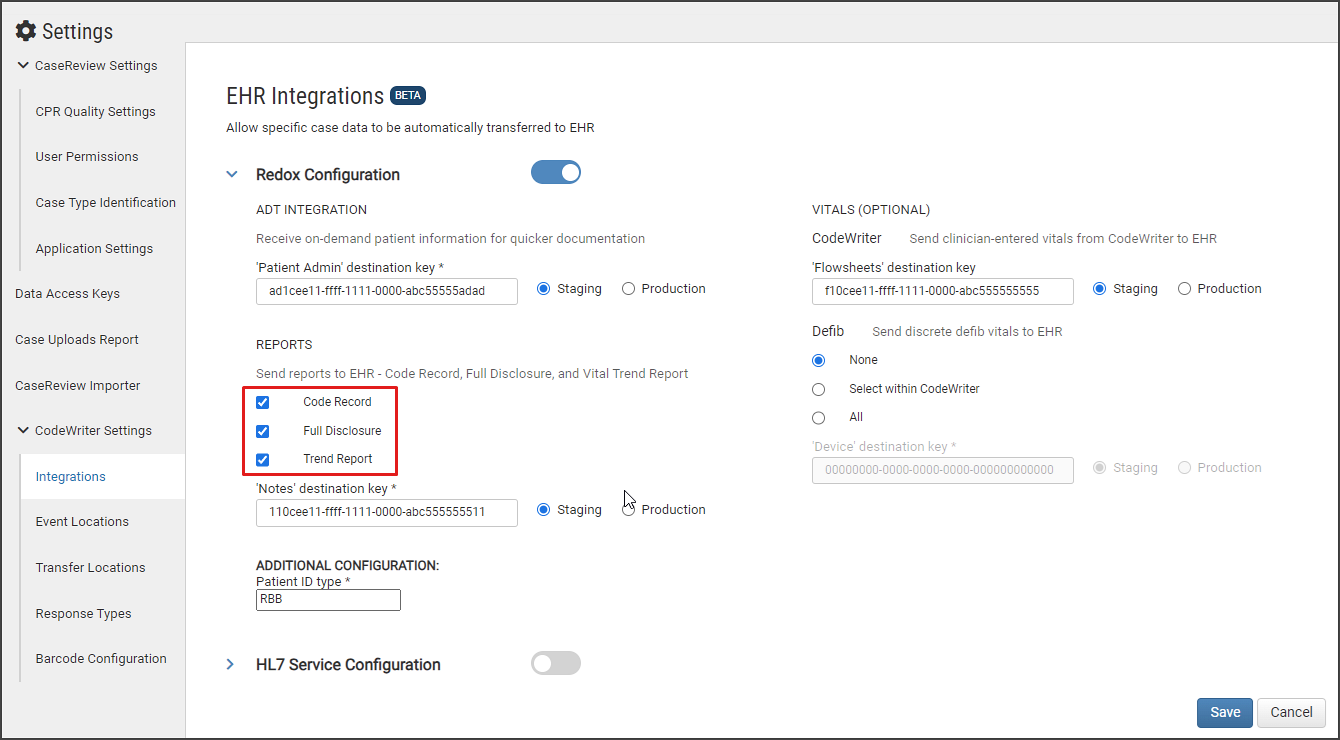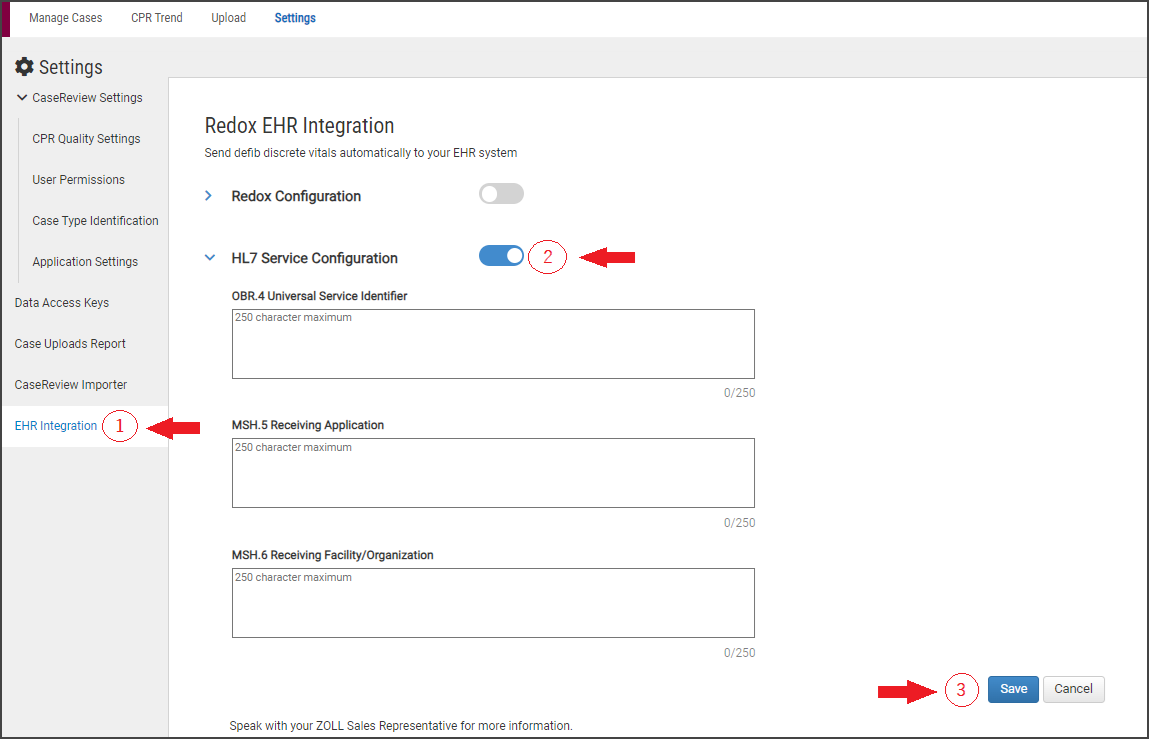Integrations
The EHR Integration setting allows CodeWriter users to document a code and then send that information to the patient's EHR via Redox. To enable this integration, slide the Redox Configuration toggle to the right and then enter destination keys for patient admin, flowsheets, device, and notes (keys can be obtained from your ZOLL representative and Redox). After it is enabled, configuration fields will be available in the HL7 export data (accessed via webapi). Discrete vital information, in cases uploaded to CaseReview, will automatically be sent to Redox when values are entered in the "destination key" fields. Redox then converts that information into the hospital’s EHR format.
The EHR discrete vitals upload to the Redox integration engine includes the same retry service that CaseReview uses for uploads.
For testing purposes, a staging destination key is provided for use in your staging environment. After the transfer of data is thoroughly tested, a new production destination key will be provided for your production go-live environment.
Here is some general information concerning this page:
-
Electronic Health Record (EHR): An EHR is a digital version of a patient's paper chart. It contains comprehensive up-to-date information on a patient's medical history, including diagnoses, medications, allergies, treatment plans, laboratory and imaging results, and other relevant clinical information. EHRs are real-time, patient-centered records that make information available instantly and securely to authorized users, such as healthcare providers and patients themselves. Both Redox and HL7 cannot be enabled at one time.
-
Redox: Redox is a third-party healthcare integration company that provides a platform for healthcare organizations to securely and efficiently exchange data with each other. We use the Redox API interface to make calls to the EHR. Both Redox and HL7 cannot be enabled at one time.
-
Admission-Discharge-Transfer (ADT) feed: The Redox API ADT feed is a set of APIs provided by Redox that provides a standardized way for healthcare organizations to share information about patient admissions, discharges, and transfers, including demographic data such as name, date of birth, gender, address, and contact information.
Redox
Reports
Select which reports types are uploaded to EHR: Code Record, Full Disclosure, an Vital Trend Report. If none of the options are selected, then the "Notes destination key" will be disabled.

HL7
The HL7 Service Configuration section allows for adding specific values that are unique to your needs. You can now set custom values for OBR.4 Universal Service Identifier, MSH.5 Receiving Application, and MSH.6 Receiving Facility/Organization, as well as including a patient name when using CodeWriter. The current implementation will still require an HL7 service utility to be installed on premise in your environment, please contact ZOLL Code Data Sales Engineering or Code Data Technical Support for questions or assistance.
Access this page from Settings > EHR Integrations > HL7 Service Configuration Toggle
